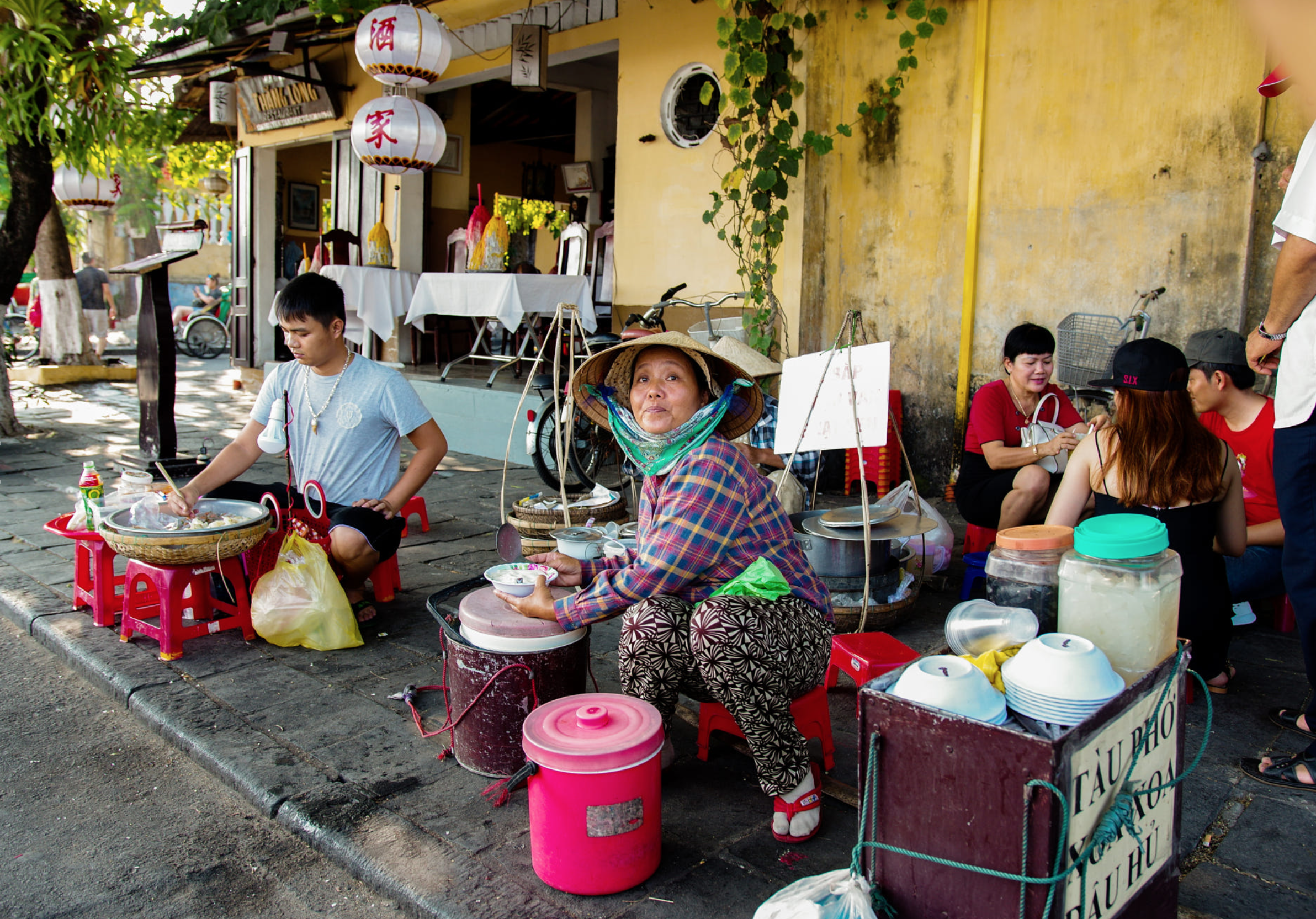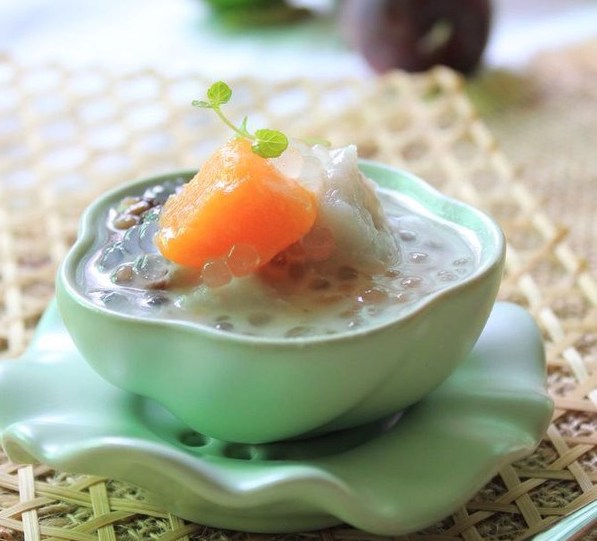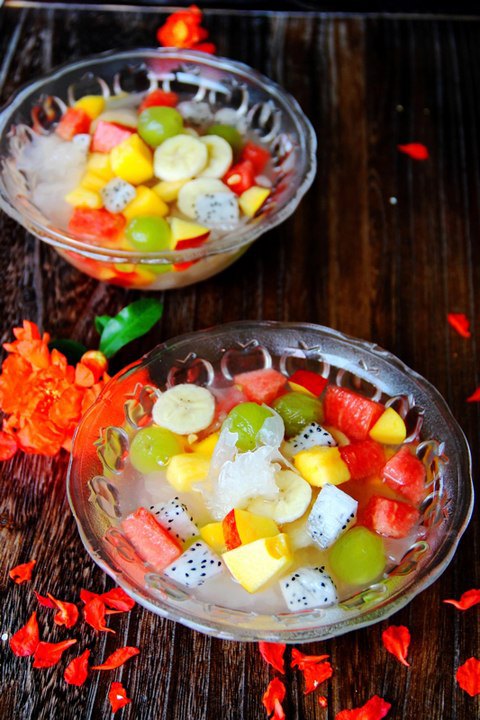Che: Vietnamese Sweet Dessert Soup
Che (Vietnamese Sweet Dessert Soup)
As the weather in Vietnam is turning up the heat, travelers and locals alike are looking for ways to cool down. But instead of the quintessential summer treats common in Western countries like ice cream and popsicles, Vietnam has its very own version of summer fare, and if you asked a handful of locals about their favorite sweets during the hot summer months, most would answer the same: che.
Che, or sweet soup, is a delightful mixture of sweet and savory flavors. Varieties are made with any number and combination of beans, milk, tapioca, fruit, coconut cream, glutinous rice and last but not least, plenty of sugar.
Before the introduction of foreign options like bubble tea, ice cream and frozen yoghurt, che varieties could be found by the hundreds in eateries dedicated solely to the dish. Now, che is usually sold as a dessert in restaurants or at stalls along the roadside, and you’ll often see locals grabbing it to go on their motorbikes. Eaten both hot and cold, when mixed with a generous helping of crushed ice, che becomes the perfect roadside treat for a summer in Vietnam. Although there are literally hundreds of varieties — from super sweet to savory — below are some of the most popular takes on the iconic delicacy.
- Check out Luxury Vietnam Tours

1. Che Do Den / Do Xanh / Hat Sen
These three types of simple che — a primary ingredient of black beans, green beans and lotus seeds, respectively — are classic Vietnamese che, and draw on the same kind of simplicity that makes Vietnamese food famous. Especially popular in northern parts of Vietnam, these types of che have been eaten throughout the generations and are distinct from many other types of che that take on characteristics of Singaporean, Malaysian and Thai che varieties.

2. Che Ba Mau
Translated literally as “three colors sweet soup”, che ba mau is one of the most easily recognized types of che, and a solid favorite among many locals. It includes a mixture of azuki beans, black-eyed peas and ever-popular mung beans along with glutinous rice and coconut cream. This particular version is often made with different ingredients, and so long as it includes the three colors from which it draws its name, che ba mau has plenty of delicious varieties.
3. Che Thap Cam
Che thap cam, meaning mixed sweet soup, has something to love for everyone, probably due to its inclusion of everything from fruit, beans, lotus seeds, jelly, coconut and tran chau. As one of the most popular forms of mixed che in Vietnam, che thap cam is a perfect choice for someone who wants a little bit of everything.
4. Che Hoa Qua
Yet another popular mixed version of che, che hoa qua brings together flavors of any combination of fruits, including pineapple, lychee, apple, pear, mango, and banana along with dried coconut, syrup and milk. Usually a bit thinner and less savory than its bean che cousins, che hoa qua is a perfect option for the summer as its simple sweetness and texture is something akin to frozen yoghurt.

5. Banh Troi Nuoc
A bit different than the others on this list, banh troi nuoc is just one version of the many types of che that incorporate rice dumplings in a mix of sweet and savory flavors. Banh troi nuoc is as simple as it is delicious, with the dumplings floating in a brown soup with water and sugar, along with some shaved ginger root for an added bite.
6. Eating Che in Vietnam
Although che has surrendered some of its popularity to sweetened iced coffee drinks and ice cream shops, che can still be found easily on most busy streets and in small eateries down most of Vietnam’s alleyways. Many shops sell che to take on the go, but the best way to enjoy che is parked on one of the eatery’s tiny chairs with a glass and a proper spoon. Many traditional Vietnamese restaurants still sell che alongside their lunch and dinner fare, as well as many supermarkets which have surprisingly delicious and locally-made che in to-go plastic cups. And for under a dollar per glass or bowl, che is the perfect way to enjoy classic Vietnamese food for cents on the dollar.
Don’t miss the chance to taste delicious street food and enjoy summer time while in Vietnam. Vietnamese Private Tours would like to recommend you our Vietnam package tours where we’ll take you around the Old Quarter of Hanoi to taste all kinds of tasty delicacies, including che!

You May Also Like
Hue Vietnam
In this post I write about Hue Vietnam: explore the cultural richness with this guide ...
How to Celebrate Songkran Festival in Thailand
Local Guide to Celebrate Thailand’s Famous Songkran Festival This beginner’s guide to Thailand’s Songkran Festival ...
Saphan Khao Fruit Market Bangkok
Saphan Khao Fruit Market Bangkok, Thailand Saphan Khao Fruit Market, located in Bangkok, capital city ...
What Is The Best Souvenir From Vietnam?
Vietnam Souvenirs: The meaningful gifts You Can’t Return Home Without Are you wondering about the ...
ویزای ویتنام
ویزای ویتنام: راهنمای کامل دریافت ویزای گردشگری برای ایرانیان ویتنام یکی از مقاصد جذاب گردشگری ...
Thailand Best Beaches
Your local guide to 16 of the Best Beaches in Thailand Thailand ranks among the ...